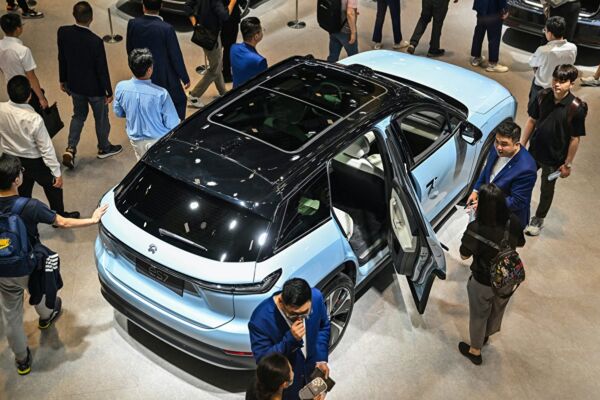As a leading representative of the new forces in China’s car manufacturing industry, NIO, known for its high-end positioning, intelligent technology, and ultimate user service, has been dubbed the “Chinese version of Tesla.” However, the second-quarter financial report for 2025 has exposed the harsh reality of NIO being deeply mired in a debt quagmire: a net loss of 49.95 billion yuan, with an average loss of 69,000 yuan per car sold. Combined with the first-quarter loss of 67.5 billion yuan, the accumulated net loss over ten years exceeds 130 billion yuan, far surpassing Tesla’s early 15-year total loss.
As of June 30, NIO’s total current liabilities amounted to 62.282 billion yuan, shareholders’ equity turned negative (-11.19 billion yuan), the asset-liability ratio soared to 92.55%, and cash reserves of 27.2 billion yuan are only enough to support operations for a year. Founder Li Bin had to once again adjust the profit timeline, setting a new goal to achieve overall profitability by 2026. Following the release of the financial report, NIO’s Hong Kong stock plummeted by 17%, with a market value evaporating over 10 billion Hong Kong dollars, indicating a severe lack of confidence in the capital market.
NIO’s financial predicament is not a sudden occurrence but rather an inevitable result of the strategy of “burning money for scale expansion.” Relying on policy subsidies and capital injections to sustain operations, NIO’s high R&D investment, battery swapping network, and direct sales model directly lead to continuous losses. Against the backdrop of declining policy subsidies, industry price wars, and obstacles to overseas exports, NIO delivered only 145,000 new cars from January to July (achieving only 30% of the annual target of 440,000 cars), ranking last among the “Nio, Xiaopeng, Li Xiang” trio in sales volume.
This is not just a crisis for NIO itself but also a microcosm of the entire Chinese new energy vehicle industry. Structural crises such as subsidy reductions, export restrictions, intensified internal competition, and technological bottlenecks are gradually surfacing. How long can NIO sustain its “burning money game”? This article will delve into its positioning development, financial troubles, reasons for losses, and reveal the true transformation of China’s new energy vehicle industry from “policy euphoria” to “market reshuffling.”
Established in 2014, NIO headquartered in Shanghai was founded by Internet entrepreneur Li Bin. The company went public on the New York Stock Exchange in 2018, completing its IPO in just 4 years, becoming the former “top seller” among the new players in the car-making industry. Its brand positioning as “high-end intelligent electric cars” and “user-centric” focused on the 300,000-500,000 yuan pure electric market, with a market share exceeding 40%.
Through achievements like the EP9 supercar (setting a Nurburgring track record of 6 minutes and 45 seconds), NIO House (176 high-end experience centers), and battery swapping ecosystem (3000+ swapping stations), NIO successfully created a high-profile image. With high user loyalty (30% repurchase rate), NOMI intelligent interaction, and community operations forming strong stickiness.
However, the high-end positioning limits sales volume, unable to dilute costs and support profitability. While successful in brand building, NIO has become ensnared in an inescapable loss quagmire in terms of the business model. The introduction of new brands Leda and Firefly, though contributing over 30% of the delivery volume in the second quarter of this year, has lowered the gross profit margin (10.3% in Q2). NIO is transitioning from “niche high-end” to “scale competition,” but with a blurry path to profitability, the patience of the capital market is running thin.

